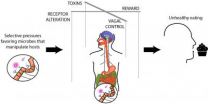(Press-News.org) Boston, MA— Bivalirudin and heparin are two anticoagulant options for patients undergoing coronary stenting for ischemic heart disease. Bivalirudin, a newer anticoagulant, has been touted as being as effective as generic heparin, but with nearly half the rate of bleeding. However, several studies have hinted that, compared with heparin, bivalirudin-based regimens might not protect as well against recurrent heart attacks and might increase the risk of stents clotting off. Moreover, newer studies have questioned whether the reduction in bleeding holds up when tested on more modern background therapy. Researchers from Brigham and Women's Hospital (BWH) conducted an analysis of all of the previous trials to date to better define both the benefits and risks of the competing anticoagulants. They found that, compared with heparin-based regimens, bivalirudin-based regimens increased the risk of heart attack and stent thrombosis. Bivalirudin-based regimens decreased the risk of bleeding, but by how much depended on whether other blood thinners were used more with heparin than with bivalirudin. These findings are published in The Lancet on August 15, 2014.
"Our study found that using a bivalirudin-based regimen increased the risk of major adverse cardiac events by nine percent. This risk was largely driven by an increased risk of heart attack and recurrent angina requiring further coronary stenting. There was also more than a four-fold increase in the risk of stent thrombosis in the first 24 hours in patients having a large heart attack who were treated with emergency stenting," explained Matthew Cavender, MD, MPH, an interventional fellow in BWH's Cardiovascular Division, senior research fellow in the TIMI Study Group and first author of this study. "Bivalirudin-based regimens lowered the risk of bleeding, but the magnitude of benefit was attenuated when glycoprotein IIb/IIIa inhibitor (GPI) use was similar in the two arms."
To help better define the benefits and risks of these two anticoagulants, researchers from BWH pooled data from 16 trials involving nearly 34,000 patients. They compared the effects of bivalirudin-based regimens with heparin-based regimens on ischemic and bleeding outcomes through 30 days.
"It can be challenging to wade through the seemingly disparate data in the literature. These findings should help clinicians make a more informed decision when selecting an anticoagulant to support coronary stenting in different types of patients by weighing the trade-offs between risks of thrombotic and bleeding complications," stated Marc S. Sabatine, MD, MPH, a senior physician in BWH's Cardiovascular Division, chairman of the TIMI Study Group and senior author of this study.
The researchers note that more work is needed to investigate specific strategies to minimize thrombotic complications during percutaneous coronary intervention, without substantially increasing the risk of bleeding.
INFORMATION:
Brigham and Women's Hospital (BWH) is a 793-bed nonprofit teaching affiliate of Harvard Medical School and a founding member of Partners HealthCare. BWH has more than 3.5 million annual patient visits, is the largest birthing center in New England and employs nearly 15,000 people. The Brigham's medical preeminence dates back to 1832, and today that rich history in clinical care is coupled with its national leadership in patient care, quality improvement and patient safety initiatives, and its dedication to research, innovation, community engagement and educating and training the next generation of health care professionals. Through investigation and discovery conducted at its Biomedical Research Institute (BRI), BWH is an international leader in basic, clinical and translational research on human diseases, more than 1,000 physician-investigators and renowned biomedical scientists and faculty supported by nearly $650 million in funding. For the last 25 years, BWH ranked second in research funding from the National Institutes of Health (NIH) among independent hospitals. BWH continually pushes the boundaries of medicine, including building on its legacy in transplantation by performing a partial face transplant in 2009 and the nation's first full face transplant in 2011. BWH is also home to major landmark epidemiologic population studies, including the Nurses' and Physicians' Health Studies and the Women's Health Initiative. For more information and resources, please visit BWH's online newsroom.
Bivalirudin versus heparin in patients planned for coronary stenting
An analysis of all trials to date redefines both the benefits and the risks of competing anticoagulants
2014-08-16
ELSE PRESS RELEASES FROM THIS DATE:
Dopamine replacement associated with impulse control increase in early Parkinson's
2014-08-15
(PHILADELPHIA) – New Penn Medicine research shows that neuropsychiatric symptoms such as depression, anxiety and fatigue are more common in newly diagnosed Parkinson's disease (PD) patients compared to the general population. The study also found that initiation of dopamine replacement therapy, the most common treatment for PD, was associated with increasing frequency of impulse control disorders and excessive daytime sleepiness. The new findings, the first longitudinal study to come out of the Parkinson's Progression Markers Initiative (PPMI), are published in the August ...
Utility of sequence-related amplified polymorphism (SRAP) markers
2014-08-15
Today, many ecological and evolutionary studies depend on a wide range of molecular tools to infer phylogenetic relationships, uncover population structure within species, and track quantitative traits. Agricultural studies use these same tools to improve crop yield and increase resistance to pests and disease.
However, many of these methods—such as amplified fragment length polymorphisms (AFLP), inter-simple sequence repeats (ISSR), and random amplified polymorphic DNA (RAPD)—have technical limitations. These include issues of reproducibility, ambiguity in determining ...
Depression often untreated in Parkinson's disease
2014-08-15
Depression is known to be a common symptom of Parkinson's disease, but remains untreated for many patients, according to a new study by Northwestern Medicine investigators in collaboration with the National Parkinson's Foundation (NPF).
In fact, depression is the most prevalent non-motor symptom of Parkinson's, a chronic neurodegenerative disorder typically associated with movement dysfunction.
"We confirmed suspicion that depression is a very common symptom in Parkinson's disease. Nearly a quarter of the people in the study reported symptoms consistent with depression," ...
Scientists discover interstellar stardust
2014-08-15
We may joke about looking for a needle in a haystack, but that's nothing compared to searching for stardust in a foil! A new paper published in Science reveals that such work has led to the discovery of seven dust particles that are not only out of this world, they're out of this solar system.
The Stardust Interstellar Dust Collector was launched in 1999 in an effort to collect contemporary interstellar dust—dust that has travelled to our solar system from another. The Collector returned in 2006; since then scientists have been combing through blue aerogel and aluminum ...
Credit allocation among researchers determined by new algorithm
2014-08-15
A new algorithm developed at Northeastern's Center for Complex Network Research helps sheds light on how to properly allocate credit.
The research was published this month in Proceedings of the National Academy of Sciences in a paper co-authored by Hua-Wei Shen, a visiting scholar at Northeastern and associate professor at the Institute of Computing Technology at the Chinese Academy of Sciences, and Albert-László Barabási, the Robert Gray Dodge Professor of Network Science and a Distinguished University Professor at Northeastern.
Using ...
New X-ray imaging developed by scientists
2014-08-15
Scientists have developed an x-ray imaging system that enables researchers to see 'live' how effective treatments are for cystic fibrosis.
Published in the American Journal of Respiratory and Critical Care Medicine, the imaging method allows researchers to monitor the effectiveness of a treatment for the life-threatening genetic disorder.
Cystic fibrosis affects many of the body's systems, but most severely the lungs, and currently it can take several months to measure how effective treatment is for the early-fatal lung disease.
Dr Kaye Morgan, lead researcher on ...
'Science' features PRB, WSU, DMC advances in preterm birth
2014-08-15
DETROIT – The Aug. 15 edition of the prestigious journal Science features a major article about the most important problem in obstetrics: preterm labor. The article, "Preterm labor: one syndrome, many causes," delivers a powerful message: preterm birth is not one condition, but many, and provides a framework for meeting this challenge.
"There are 15 million preterm babies born annually, and the condition affects 5 percent to 15 percent of all pregnancies, with the highest rates in North America and Africa. Prematurity is the leading cause of infant death up to age 1and ...
Charges for blood tests vary across California hospitals
2014-08-15
New UC San Francisco research shows significant price differences for ten common blood tests in California hospitals, with some patients charged as little as $10 for one test while others were charged $10,169 for the identical test.
The analysis of charges at more than 150 California hospitals looked at blood tests that are often required of patients, such as lipid panel, basic metabolic panel, and complete blood cell count with differential white cell count.
Hospital ownership and teaching status help explain a portion of the variation – prices generally were lower ...
Do gut bacteria rule our minds?
2014-08-15
It sounds like science fiction, but it seems that bacteria within us — which outnumber our own cells about 100-fold — may very well be affecting both our cravings and moods to get us to eat what they want, and often are driving us toward obesity.
In an article published this week in the journal BioEssays, researchers from UC San Francisco, Arizona State University and University of New Mexico concluded from a review of the recent scientific literature that microbes influence human eating behavior and dietary choices to favor consumption of the particular nutrients they ...
Stroke researchers link ability to self-administer medication with memory loss
2014-08-15
West Orange, NJ. August 15, 2014. Kessler stroke researchers and colleagues have identified an association between over-optimistic estimation of one's own ability to take medications accurately, and memory loss among stroke survivors. Results indicate that assessing patients for their ability to estimate medication skills accurately may predict memory disorder. The article, "Stroke survivors over-estimate their medication self-administration ability (MSA), predicting memory loss," was epublished ahead of print on May 28 by Brain Injury (doi:10.3109/02699052.2014.915984). ...
LAST 30 PRESS RELEASES:
Jeonbuk National University study shows positive parenting can protect adolescents against self-harm
Surface-engineered ZnO nanocrystals to tackle perfluoroalkyl substance contamination
This new understanding of T cell receptors may improve cancer immunotherapies
A new fossil face sheds light on early migrations of ancient human ancestor
A new immunotherapy approach could work for many types of cancer
A new way to diagnose deadly lung infections and save lives
40 percent of MRI signals do not correspond to actual brain activity
How brain-inspired algorithms could drive down AI energy costs
Gum disease may be linked to plaque buildup in arteries, higher risk of major CVD events
Contrails are a major driver of aviation’s climate impact
Structure of dopamine-releasing neurons relates to the type of circuits they form for smell-processing
Reducing social isolation protects the brain in later life
Keeping the heart healthy increases longevity even after cancer
Young adults commonly mix cannabis with nicotine and tobacco
Comprehensive review illuminates tau protein's dual nature in brain health, disease, and emerging psychiatric connections
Book prepares K-12 leaders for the next public health crisis
Storms in the Southern Ocean mitigates global warming
Seals on the move: Research reveals key data for offshore development and international ecology
Sports injuries sustained during your period might be more severe
World's first successful 2 Tbit/s free-space optical communication using small optical terminals mountable on satellites and HAPS
Can intimate relationships affect your heart? New study says ‘yes’
Scalable and healable gradient textiles for multi‑scenario radiative cooling via bicomponent blow spinning
Research shows informed traders never let a good climate crisis go to waste
Intelligent XGBoost framework enhances asphalt pavement skid resistance assessment
Dual-function biomaterials for postoperative osteosarcoma: Tumor suppression and bone regeneration
New framework reveals where transport emissions concentrate in Singapore
NTP-enhanced lattice oxygen activation in Ce-Co catalysts for low-temperature soot combustion
Synergistic interface engineering in Cu-Zn-Ce catalysts for efficient CO2 hydrogenation to methanol
COVID-19 leaves a lasting mark on the human brain
Scientists use ultrasound to soften and treat cancer tumors without damaging healthy tissue
[Press-News.org] Bivalirudin versus heparin in patients planned for coronary stentingAn analysis of all trials to date redefines both the benefits and the risks of competing anticoagulants



